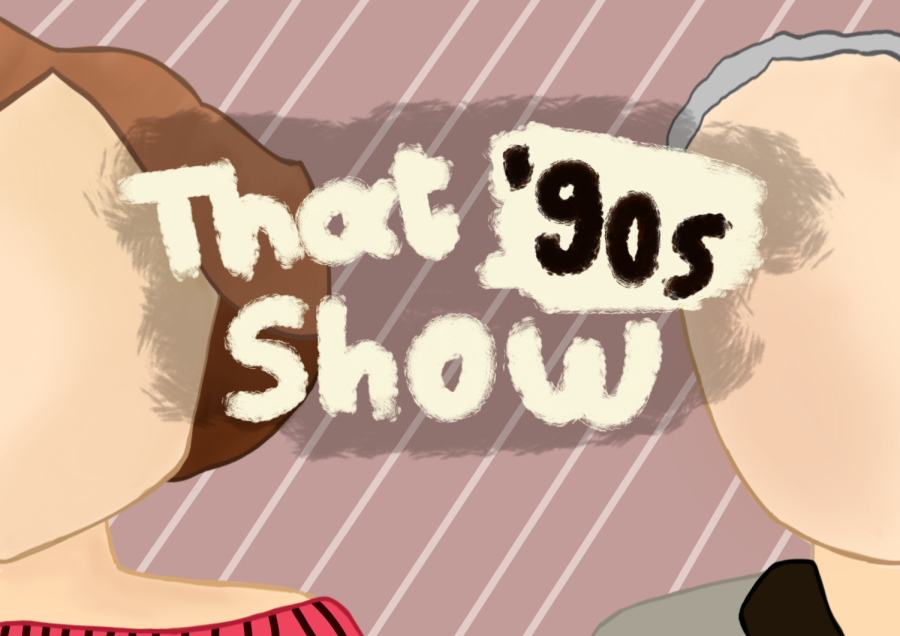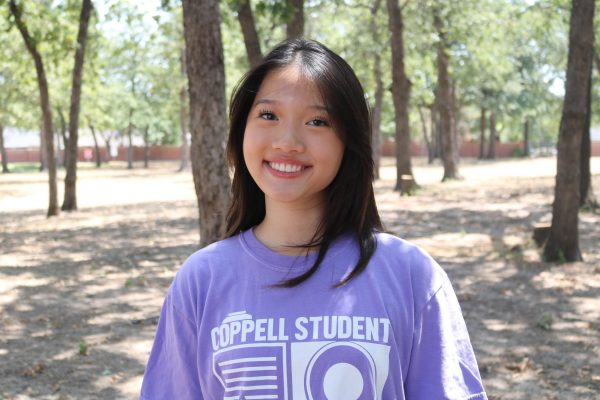“That ‘90s Show” misses the groove of its precedent
“That ‘90s Show” is a follow up to the highly praised “That ‘70s Show.” The Sidekick staff writer Wendy Le thinks the series is disappointing, failing to meet the standards set by its predecessor.
February 13, 2023
Please read this with discretion as it will include spoilers.
While scrolling through my Netflix queue, I was taken aback to see “That ‘90s Show” appear before me. For years, fans of the original classic, “That ‘70s Show,” have eagerly discussed the potential evolution of their favorite characters, fueling their imaginations and speculations. I had always thought it would remain a mere fantasy, but to my surprise, the spinoff has finally come to fruition. I was eager to see how my favorite characters’ storylines have evolved.
The original series, “That ’70s Show,” was renowned for its relatable characters, witty humor and nostalgic references that brought the 1970s to life. The show revolves around friends Donna (Laura Prepon), Eric (Topher Grace), Michael (Ashton Kutcher), Jackie (Mila Kunis), Hyde (Danny Masterson) and Fez (Wilmer Valderrama) as they navigate life and find their place in the world, primarily in the Formans’ basement and their hometown of Point Place, Wisconsin. The show’s iconic fashion, moments of levity and sharp humor while also delving into more mature themes such as complex family dynamics, coming-of-age struggles, relationships and the cultural and political changes of the era, made “That ’70s Show” a timeless classic that has left a lasting imprint on the hearts of viewers, myself included.
As “That ‘90s Show” began, my excitement was palpable awaiting the return of my beloved characters. Donna enters the Forman house, laden with bags, while Eric saunters in behind her, immediately transporting the audience back to their familiar dynamic. However, a new character is introduced as their daughter upon their arrival: Leia Forman (Callie Haverda).
Red greets them with his signature stern expression, a classic portrayal of his strict nature, while Kitty greets them with a cheerful smile, highlighting their unchanging roles and making it feel as though “That 70s Show” had never left. The characters seamlessly slip back into their well-known personas, serving as a reminder of the magnetic charm that made them enduring fan favorites.
The reunion of returning characters is the highlight of the series. Fez, once a foreign exchange student, has now established himself as a local celebrity thanks to his thriving chain of hair salons. The infamous couple, Jackie and Michael (Kelso), reignite their love for each other and are now tying the knot for the second time, while also being proud parents to their son Jay Kelso (Mace Coronel), who emulates his father’s reputation as a notorious flirt and Leia’s love interest.
The evolution of their storylines, particularly Fez’s, is a source of great joy and fulfillment for me. However, I was disappointed to see Jackie and Kelso rekindle their relationship, as their past is plagued with an unhealthy dynamic. Kelso frequently treats Jackie as a mere afterthought, rather than a partner deserving of love and respect. Their reunion is a concerning reminder that toxic patterns can persist, even after years apart. It is a disappointing representation of a relationship that fails to evolve or improve, and highlights the cyclical nature of toxic dynamics.
In addition, the new series fails to properly acknowledge key characters from the original cast, such as Laurie (Lisa Robin Kelly and Christina Moore), Midge (Tanya Roberts) and Hyde (Danny Masterson), who was a central figure in the original friend group. With the recent death of Roberts and the controversies surrounding Masterson, fans were apprehensive about the return of their beloved characters. Instead, they expected to see their stories acknowledged and honored in the new series.
I looked forward to seeing how their storylines have evolved from the original series, but eventually was let down when I realized that they weren’t mentioned throughout the entirety of the show. The lack of acknowledgement towards these background-but-still-important characters is a missed opportunity for the writers to pay homage to the original series and its memorable characters as well as actors and actresses that played a key role in winning the audience’s heart.
With the inclusion of new and diverse characters, the show has taken strides to keep up with evolving times and create relatable and impactful storylines that resonate with today’s audience. Like “That ‘70s Show”, which ran in the ‘90s, “That ‘90s Show” channels nostalgia for the time period from this era with similar hairstyles, the beginnings of household computers and dated slang to humorously immerse viewers. Through the stories of these new faces, the show also sheds light on more modern struggles such as the challenges of single parenthood, same-sex relationships, the cultural and academic pressures faced by individuals and the enduring impact of absent or detached father figures.
Unfortunately, the new cast falls short in capturing the magic of the original series. The main ensembles’ personalities feel stale and lack the depth and individuality that make diverse characters so captivating. Gwen (Ashley Aufderheide) and Leia’s friendship brings to mind the endearing bond between Eric and Donna and new relationships like Nate (Maxwell Acee Donovan) and Nikki (Sam Morelos) only mimic the timeless echo of the Jackie and Kelso pairing, playing out like a rehashed melody with different lyrics.
Nate embodies the familiar notes of Kelso’s naiveté, but with a sweeter and more innocent tune. Meanwhile, Nikki presents an updated Jackie, with a stylish wardrobe and academic focus to match. The bond between Gwen and Leia rings with familiarity, a haunting refrain of Eric and Donna’s friendship, with Gwen playing the role of the neighborhood’s trusty sidekick, like Donna before her.
But the new cast falls short of igniting the same fire as the original, missing the electric synergy that brought the previous characters to life, despite mimicking the same dynamic.
The witty banter and humor that made the original so unforgettable is replaced with a limp flame, unable to ignite the spark of wit and humor that is expected from a classic sitcom. The spinoff fails to bring new life to the familiar world, leaving viewers longing for the spark and charisma of the original
“That 90s Show” had the potential to be a great revival of the classic “That 70s Show,” but falls short in delivering a satisfying experience. It seems as though the writers failed to grasp the essence of the characters and the potential for a compelling story, leaving the audience with a shallow and unsatisfying representation. The show ultimately proves to be a disappointing bust, failing to live up to the standards set by the original.











